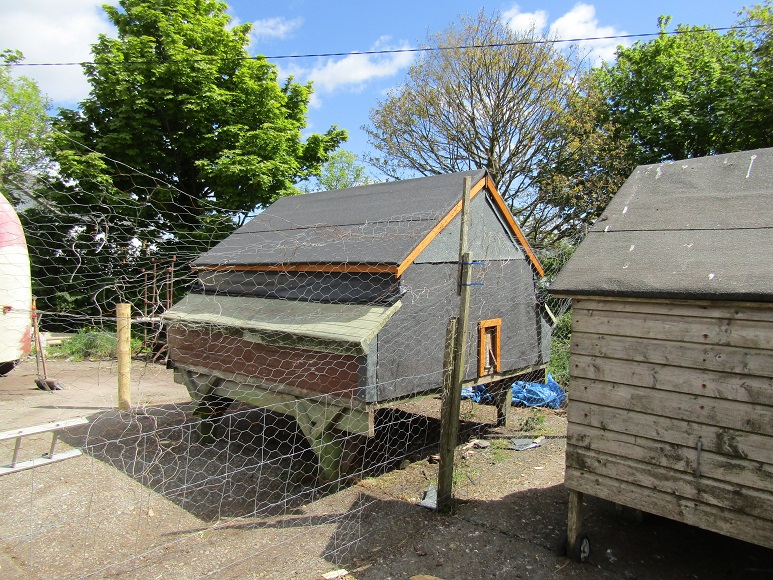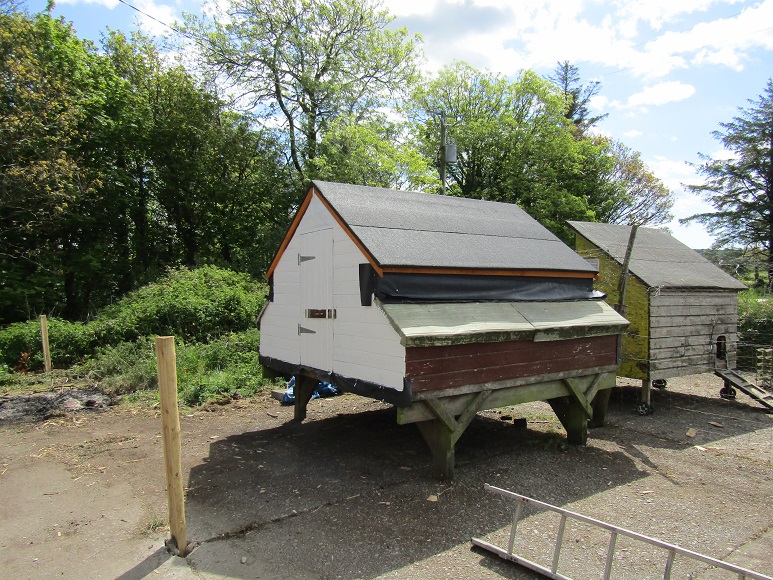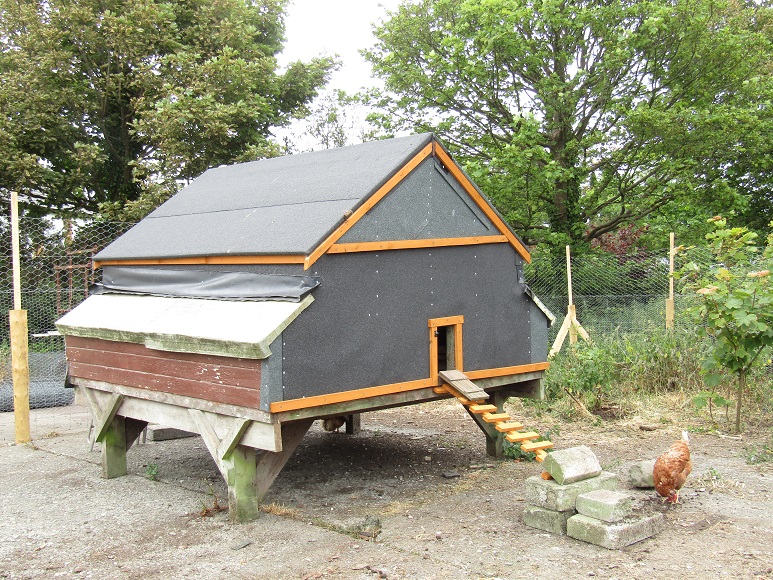When we moved into our Irish Wreck we built a chicken house from packing cases, the window from a landrover, and wheels from a pushchair. It was only supposed to be a temporary accommodation, but many years down the line it was still in use – there were so many other things to do. Finally, however, the time came when we needed to do something about it.

By happenstance, a neighbour had decided to sell up and move to a smaller place, in town. She had a hen-house built by her late husband. It had a tiny hole in the roof, but the structure was sound. In the process of tidying the place up ready to sell, it was to be destroyed, so I leapt at the chance to take it away, though I didn’t have a clue how we’d move it.

A local farmer was happy to help, but the bale-handlers on the back of his tractor were maybe three feet long, and the hen-house was nine feet square… So we put some supporting wood underneath, and strapped the house on to the tractor with ropes and held our breath as he lifted. The house had two options – the frame could hold, or it might just fall apart under the strain!

Paul had built it as strong as the proverbial brick outhouse, it seems. It survived the short journey, bouncing along at walking pace.

It was set down in our yard outside the present chicken run.
Then I decided to fix the ‘small’ hole in the roof. H’m. Rain had obviously been going in through that tiny hole for a LONG time. There was nothing to fix. Under the felt, the whole roof was like sponge, and came off in handfuls. But the main timbers of the house were still, amazingly, sound.


There was no point in doing anything other than clean out the old screws and buy new plywood and roofing felt. The nesting boxes were sound as they had been covered in aluminium sheeting from a boat that our neighbour had cut up for scrap.

Two plywood sheets later it was ready for felting. Luckily we were in the midst of a hot, dry spell.
Also a hole in the floor was repaired, and the access door for cleaning it out was given a few licks of some acrylic paint we had lying around, and some new hinges.

Once we had felted the roof, I had bits of felt leftover, so I felted the end which will take the brunt of weather coming in off the Atlantic.

The hen house had been dropped outside of the original chicken run, and we decided to simply extend the run around it, so knocked holes in the concrete to get new posts in… they didn’t always go in straight! The whole yard is concrete as it had been a milking parlour at one time. The building had been half-demolished by a falling tree, and the remainder of the building eventually knocked, and swept into the big pile of rubble behind the chicken run, now a mass of brambles and a haven for wildlife. But the concrete base means that once the fox wire is fixed, foxes can’t burrow underneath, which they’re quite good at – as my neighbour found out a few years ago to his cost.

Then we extended the fox wire around the new posts, replaced some of the old posts which had rotted out, and put new chicken wire around the whole area, six-feet high in total. On the right, you can make out a tiny self-sown Sycamore tree. Usually these are a nuisance; even though they’re lovely, they grow like weeds, but this one is lucky. I’m going to let it mature to provide shade for the chickens in those balmy summer days.

Then, finally, the day came when we trashed the original chicken house. Some boards had been treated with preservative, so we rescued those to repair the garden shed.

This fine cockerel then inspected the area, making sure we’d done a good job. Later that night we discovered that he’d found his way into the new house, with three of the hens, leaving the rest hanging about disconsolately outside, wondering where their home had gone. We had to run around, catch them, and thrust them inside their new accommodation, amidst much clucking and squawking. But they got the message. The next evening they all found their way to bed without help.